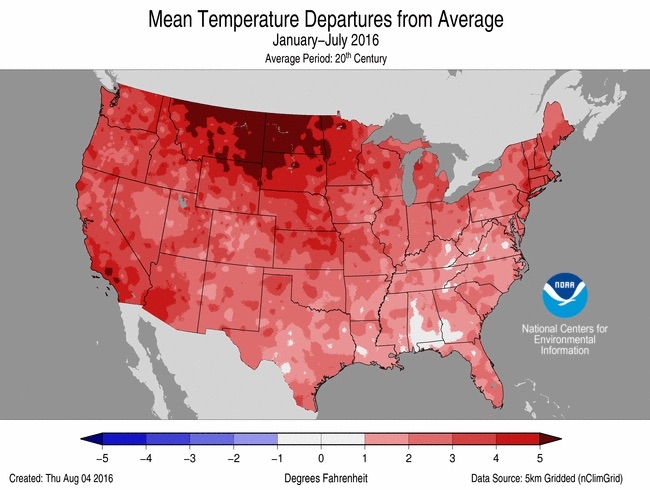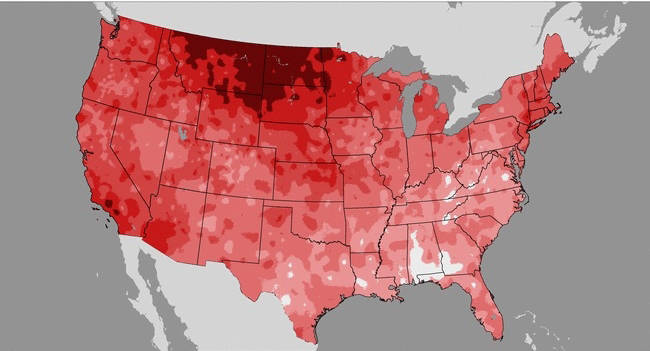In the midst of the dog days of summer, the U.S. is still having its third-hottest year on record through July. The month also saw two states — New Mexico and Florida — clinch their hottest July, while Alaska continued to stay on track for its warmest year in the books.
For the contiguous U.S., the year-to-date temperature was 54.3°F (12.4°C), or 3.0°F (1.7°C) above the 20th century average, according to data released Monday by the National Oceanic and Atmospheric Administration. Every state was warmer than average for the same period.
“The January-July period was the third warmest by a fairly wide margin,” NOAA climatologist Jake Crouch said in an email.
The U.S. has been just one hotspot on the planet, which is having its warmest year on record by a good margin. The globally hot year is largely the result of the excess heat trapped by ever increasing amounts of greenhouse gases in the atmosphere.

Temperatures this year have edged close to 1.5°C above the average for the late 19th century, before warming had much of an impact. Nations have agreed to limit warming this century to below 2°C, with some discussion of aiming for the tougher 1.5°C threshold.
